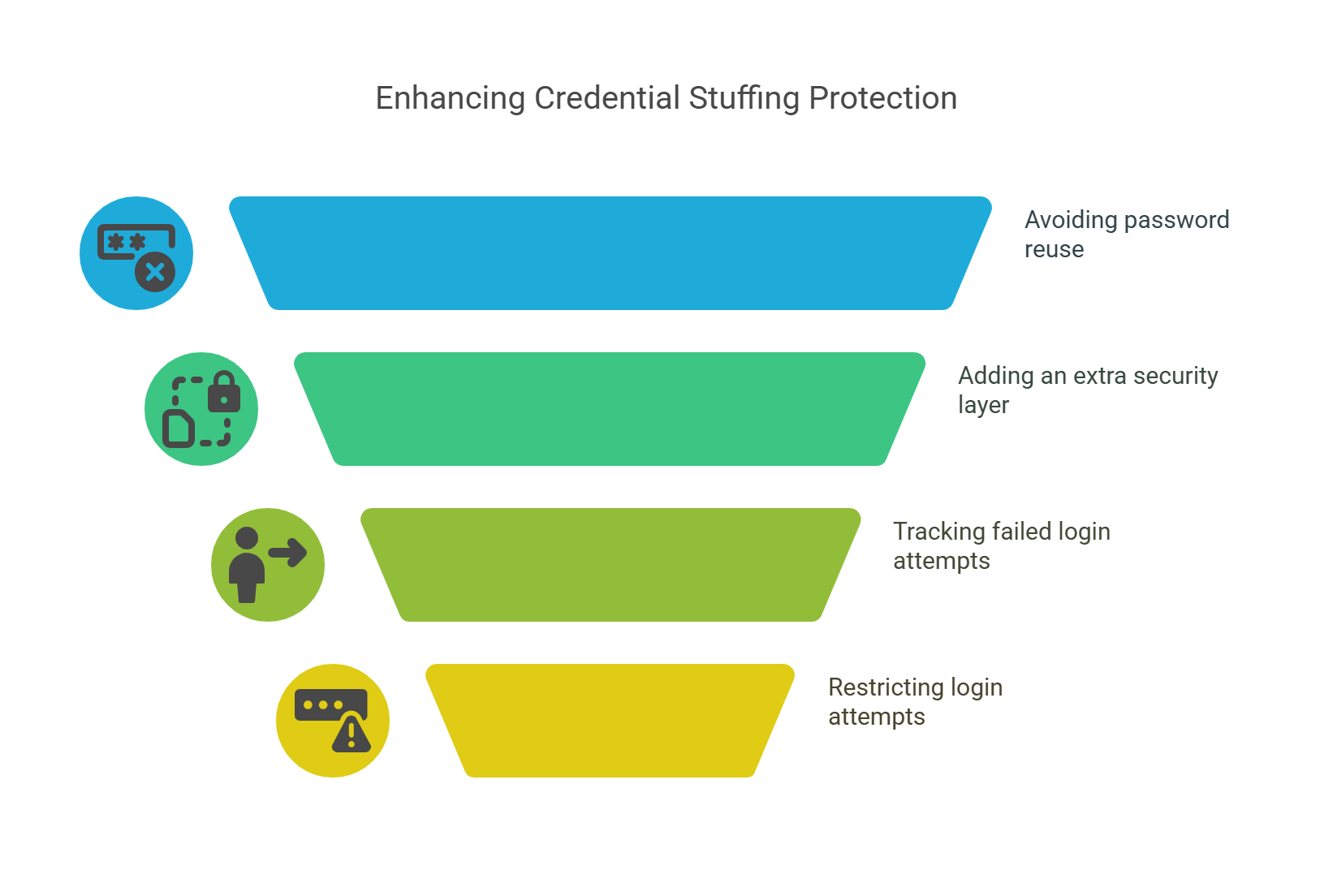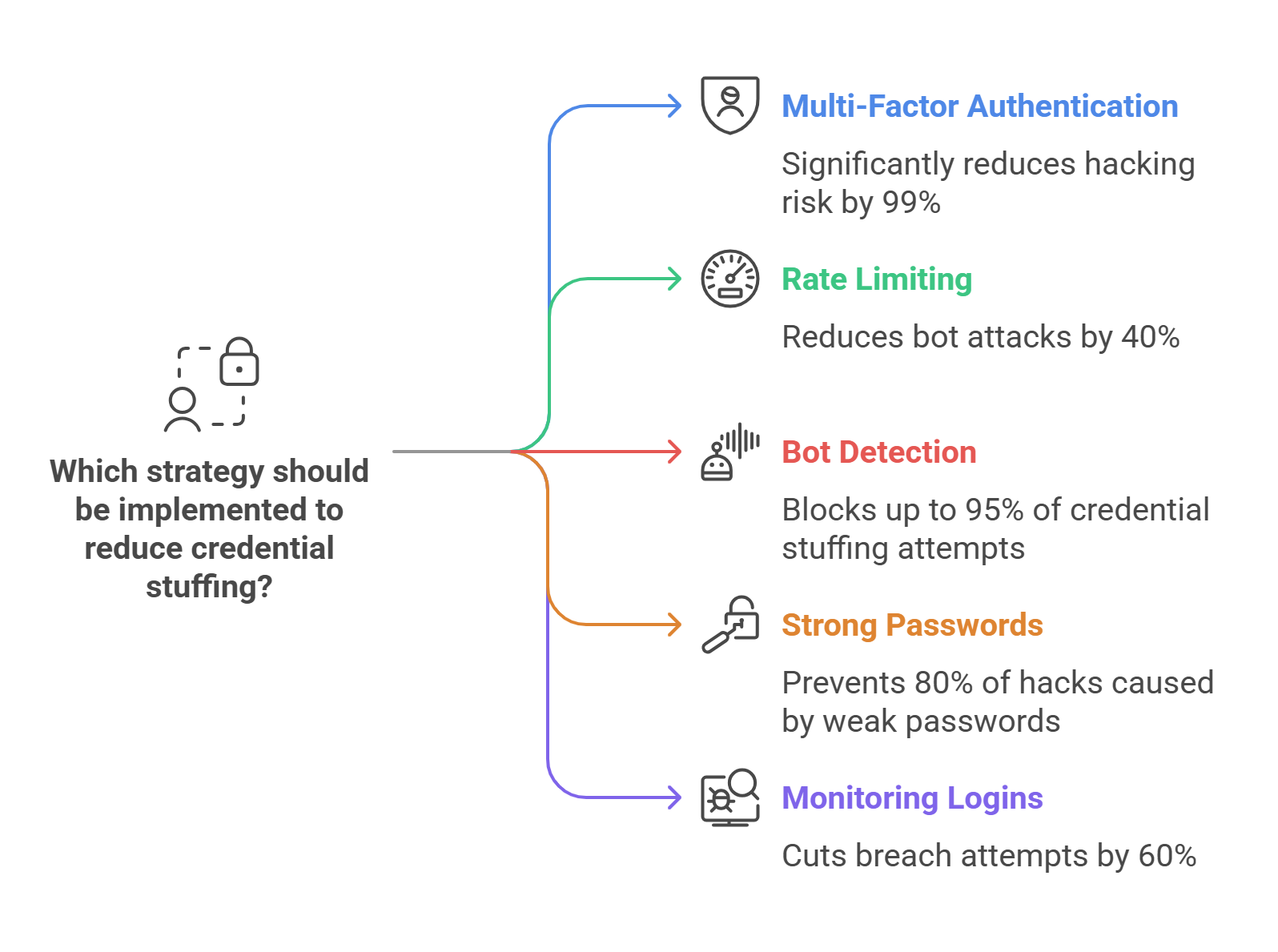Credential stuffing is a big threat today. These attacks are becoming more advanced. Both people and businesses need to protect their accounts. In this guide, we’ll show you how to stop credential stuffing, answer common questions, and give tips to help you stay safe online.
What is Credential Stuffing?
Credential stuffing happens when hackers use automated tools to try many usernames and passwords. They often get these from past data breaches. People tend to reuse passwords, so hackers can use old passwords to get into accounts on sites like social media or banks.
Common Mistakes Most Beginners Make in Protection Against Credential Stuffing
Many people and businesses don’t fully realize the risk of credential stuffing. Here are common mistakes:
-
Reusing passwords: Using the same password on many sites makes it easier for hackers to get into your accounts.
-
Not using multi-factor authentication (MFA): MFA adds another layer of security. Many don’t use it.
-
Not tracking failed logins: You might miss signs of a credential stuffing attack if you don’t watch login attempts.
-
No rate limits: Without limits on login attempts, attackers can try many combinations quickly.

How to Prevent Credential Stuffing Attacks Effectively
Credential stuffing may seem hard to stop, but these simple methods can help:
-
Use Multi-Factor Authentication (MFA)
MFA adds an extra step to logging in. Even if hackers have your password, they can’t get in without the second step, like a code sent to your phone or an email link.
Does MFA stop credential stuffing?
Yes! MFA is one of the best ways to prevent credential stuffing. Even with your stolen password, hackers can’t bypass MFA.
Best Tools to Detect and Mitigate Credential Stuffing Attacks
Here are some helpful tools to prevent credential stuffing:
-
Cloudflare: Blocks fake login attempts in real-time with bot protection.
-
Imperva: Protects with rate limits, CAPTCHA, and IP blocking.
-
Login Lockdown: A WordPress plugin that blocks login attempts after too many failures.
5 Research-Backed Credential Stuffing Strategies
These 5 strategies can help reduce credential stuffing:
-
Multi-Factor Authentication (MFA): Google found that accounts using MFA are 99% safer from being hacked.
-
Rate Limiting: Akamai found that rate limits cut bot attacks by 40%.
-
Bot Detection: Radware says AI can block up to 95% of credential stuffing.
-
Strong Passwords: Verizon reports that weak passwords cause 80% of hacks.
-
Monitoring Logins: Trustwave found that monitoring logins cut breach attempts by 60%.

Conclusion
There’s no one solution to stopping credential stuffing. You need to use a mix of methods like strong authentication, monitoring tools, and proactive security steps. Following best practices and using the right tools will lower your risk.


